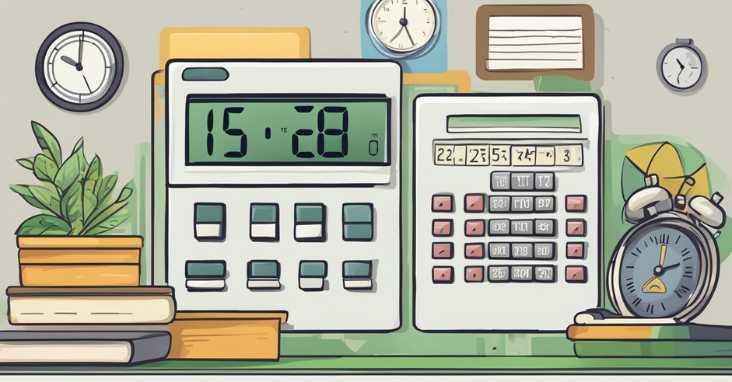How Many Words is a 5 Minute Speech? A 5-minute speech typically has 625-750 words, based on an average speaking rate of 125-150 words per minute.
Public speaking can be a daunting task, especially when it comes to time management. One of the most frequently asked questions is, “How many words is a 5 minute speech?” Understanding speech length is crucial for effective communication and delivery. Whether it’s a presentation at work, a wedding toast, or a TED Talk, knowing how to structure your speech is key to capturing your audience’s attention and delivering your message effectively.

To answer the question, “How many words is a 5 minute speech?” the answer varies depending on the speaker’s pace and style. However, on average, a 5 minute speech consists of approximately 750-900 words. This number can vary depending on the complexity of the topic, the speaker’s delivery style, and the audience’s attention span. Understanding the components of a speech, such as the introduction, body, and conclusion, can help structure your speech and ensure that you stay within the allotted time frame.
Key Takeaways
- A 5 minute speech typically consists of 750-900 words.
- Understanding the components of a speech, such as the introduction, body, and conclusion, can help structure your speech and ensure you stay within the allotted time frame.
- Utilizing speech length tools and resources can help adapt to different speech formats and ensure effective delivery.
Link to external resource: How to Write a Speech: Step-by-Step Guide
Understanding Speech Length

When it comes to public speaking, one of the most common questions people have is how many words they should prepare for a certain amount of time. While there is no one-size-fits-all answer, understanding speech length can help you estimate how many words you need to write for a 5 minute speech.
Words Per Minute (WPM)
The average speaking rate for an English speaker is around 125-150 words per minute (WPM). However, this can vary based on factors such as the speaker’s accent, the topic, and the audience. Some speakers may speak faster or slower than this average rate, so it’s important to consider your own speaking rate when estimating the length of your speech.
Average Speaking Rate
To get a more accurate estimate of your own speaking rate, you can record yourself speaking for a few minutes and count the number of words you say. Then, divide the total number of words by the number of minutes you spoke to get your average speaking rate. This can help you determine how many words you need to prepare for a 5-minute speech.
Speech Time Variations
It’s important to note that speech time can vary based on factors such as pauses, audience reactions, and unexpected interruptions. It’s a good idea to practice your speech several times and time yourself to get a better idea of how long it will take you to deliver the speech. This will also help you identify any areas where you may need to adjust your speaking rate or cut down on the number of words.
To learn more about speech length and how to estimate the number of words you need for a certain amount of time, check out this resource, which provides tips and guidelines for estimating speech length.
Components of a Speech
When it comes to giving a speech, there are a few key components that can make or break its success. In this section, we’ll explore some of the most important aspects of speechwriting and delivery.
Structuring Your Speech
One of the first things to consider when crafting a speech is its structure. A well-organized speech will be easier for your audience to follow and understand. This can be achieved through the use of an outline, which can help you to organize your thoughts and ensure that your speech flows logically from one point to the next.
Incorporating Pauses
Pauses are an important part of speech delivery, as they can help to emphasize key points and give your audience time to digest the information you’re presenting. They can also help to break up the monotony of a long speech and keep your audience engaged. When incorporating pauses into your speech, it’s important to practice your delivery so that you can strike the right balance between too many and too few pauses.
Engagement Elements
Engagement is key to keeping your audience interested and invested in your speech. There are a number of elements you can incorporate into your speech to help achieve this, including humor, stories, and interesting facts. These elements can help to make your speech more relatable and memorable, and can also help to establish a connection between you and your audience.
To learn more about crafting a successful speech, check out this guide from Toastmasters International.
Speech Writing and Preparation
Crafting Your Message
Crafting a message for a speech is a crucial step in preparing a successful presentation. The message should be clear, concise, and relevant to the audience. The speaker should consider the purpose of the speech, the main points to be covered, and the desired outcome. It is important to organize the message in a logical and coherent manner to ensure that the audience can follow along. The use of storytelling, anecdotes, and humor can also help to engage the audience and make the message more memorable.
Rehearsal and Timing
Rehearsal is key to delivering a successful speech. It allows the speaker to become familiar with the material and to identify areas that may need improvement. Timing is also an important factor to consider. The speaker should aim to deliver the speech within the allotted time frame to keep the audience engaged and to ensure that all key points are covered. A useful tool for timing a speech is to practice with a timer or stopwatch.
Audience Analysis
Understanding the audience is crucial to delivering an effective speech. The speaker should consider the demographics of the audience, their interests, and their knowledge of the topic. This information can help to tailor the message and delivery to better engage the audience. The use of visual aids, such as slides or videos, can also be effective in capturing the audience’s attention.
To learn more about speech writing and preparation, check out this resource.
Delivery Techniques

When it comes to delivering a speech, the content is only part of the equation. The way in which a speaker delivers their message can make all the difference in how it is received by the audience. Here are some key delivery techniques to keep in mind when preparing a speech.
Pacing and Tone
Pacing and tone are important aspects of speech delivery. A speaker should aim to speak at a pace that is comfortable for the audience to follow, without rushing through the content or speaking too slowly. Varying the tone and inflection of the voice can help to keep the audience engaged and interested in the speech.
Language and Clarity
Using clear, concise language is essential for effective speech delivery. A speaker should aim to use language that is appropriate for the audience and easy to understand. Avoid using jargon or technical terms that may be unfamiliar to the audience. It is also important to enunciate words clearly and avoid speaking too quickly.
Handling Questions
Handling questions effectively is an important part of speech delivery. A speaker should be prepared to answer questions from the audience and should aim to do so in a clear and concise manner. It is important to listen carefully to the question being asked and to take time to formulate a thoughtful response.
To learn more about effective delivery techniques, check out this resource. Toastmasters is a well-respected organization that provides resources and training for public speaking.
Speech Length Tools and Resources

When preparing a speech, it is essential to know how many words are needed to fill a specific amount of time. Fortunately, there are numerous speech length tools and resources available online that can help you determine the appropriate length of your speech.
Word Counters and Calculators
One of the most effective tools for calculating the number of words in your speech is a word counter. Word counters are available online and can quickly determine the exact number of words in your speech. Some popular word counters include WordCounter.net and Word Count Tool. These tools are simple to use and provide accurate word counts for your speech.
Speaking Time Estimators
Another useful tool for determining the length of your speech is a speaking time estimator. Speaking time estimators use the number of words in your speech to calculate the approximate length of time it will take to deliver it. Some popular speaking time estimators include SpeechinMinutes.com and Speech Length Calculator. These tools are particularly useful when preparing for a time-limited speaking engagement.
It is important to note that while these tools are helpful, they should not be relied upon entirely. Factors such as speaking pace, audience engagement, and pauses can all affect the actual length of your speech. Therefore, it is always a good idea to practice your speech before delivering it to ensure that it fits within the allotted time.
For more information on speech length tools and resources, visit the National Speakers Association website. They provide a comprehensive list of resources that can help you prepare for your next speaking engagement.
Overall, utilizing these tools and resources can help you prepare a well-timed and effective speech.
Adapting to Different Speech Formats

When it comes to delivering a speech, there are various formats to consider. From informative to persuasive speeches, each format requires a different approach to effectively convey the intended message. Additionally, adjusting for different time frames is crucial to ensure that the speech is neither too long nor too short. In this section, we will explore the different formats of speeches and how to adapt to them.
Informative vs. Persuasive Speech
Informative speeches are designed to educate or inform the audience about a particular topic. They are often used in academic settings or to share information about a specific subject. On the other hand, persuasive speeches are intended to convince the audience to take a particular action or adopt a specific point of view. They are commonly used in political campaigns, advertising, and sales.
When delivering an informative speech, it’s essential to provide accurate and relevant information while keeping the audience engaged. Using visual aids, such as graphs and charts, can help illustrate complex concepts and make the speech more engaging. In contrast, persuasive speeches require a more emotional approach to appeal to the audience’s emotions and convince them to take action.
Adjusting for Different Time Frames
The length of a speech is a crucial factor to consider when planning a presentation. Depending on the occasion, speeches can range from a one-minute elevator pitch to a 30-minute keynote address. It’s essential to adjust the speech’s content to fit within the allotted time frame to ensure that the audience remains engaged and the message is effectively conveyed.
According to an article by Forbes, a five-minute speech should be around 600-750 words. This estimate allows for a comfortable speaking pace and time for pauses and audience interaction. However, it’s crucial to keep in mind that the ideal word count may vary depending on the speaker’s delivery style and the complexity of the topic.
In conclusion, adapting to different speech formats is crucial to deliver an effective presentation. Understanding the differences between informative and persuasive speeches and adjusting for different time frames can help ensure that the message is effectively conveyed. By using appropriate visual aids and adjusting the speech’s content to fit the allotted time frame, speakers can engage their audience and leave a lasting impression.
Here is a link to an external resource that provides more information on how to deliver a five-minute speech effectively.
Final Review and Adjustments

After finalizing the speech content, it’s essential to review it thoroughly before delivering it to the audience. The review process helps to ensure that the speech conveys the intended message and is within the allotted time limit.
One useful tool for reviewing a speech is a timer. By timing the speech, the speaker can determine if the speech is too long or too short. As a general rule of thumb, a five-minute speech should consist of approximately 750 words. However, the actual number of words may vary depending on the speaker’s pace and style.
Another aspect to consider during the review process is the core message or essence of the speech. The core message should be clear and concise, and the speech should revolve around it. The speaker should ensure that the speech stays on topic and does not deviate from the core message.
After reviewing the speech, the speaker may receive feedback from others. Feedback can be valuable in improving the speech and making necessary adjustments. It’s important to consider the feedback received and make changes that align with the core message and intended audience.
In conclusion, reviewing and adjusting a speech is a critical step in delivering an effective presentation. By reviewing the speech, considering the core message, and incorporating feedback, the speaker can ensure that the speech is engaging, informative, and within the allotted time limit. For more information on how to deliver a compelling speech, check out this resource from TED Talks.
Frequently Asked Questions

What is the ideal word count for a 5-minute speech?
The ideal word count for a 5-minute speech varies depending on the speaker’s pace, style, and topic. However, a general rule of thumb is that a 5-minute speech should be around 750-900 words. This word count allows for the speaker to convey their message effectively without rushing or dragging on.
How does speech pacing affect the word count of a 5-minute presentation?
Speech pacing can greatly affect the word count of a 5-minute presentation. If a speaker talks too fast, they may need to reduce the word count to avoid rushing through their speech. On the other hand, if a speaker talks too slowly, they may need to increase the word count to avoid running out of material before the allotted time is up.
What is the average speaking rate in words per minute for a speech?
The average speaking rate in words per minute for a speech is around 125-150 words. However, this can vary depending on the speaker’s pace, style, and topic. It is important for the speaker to find a comfortable speaking rate that allows them to convey their message clearly and effectively.
How can I estimate the length of my speech in minutes based on word count?
To estimate the length of a speech in minutes based on word count, divide the total number of words by the average speaking rate in words per minute. For example, a 750-word speech at an average speaking rate of 125 words per minute would be approximately 6 minutes long.
What are some tips for fitting my speech into a 5-minute time frame?
Some tips for fitting a speech into a 5-minute time frame include practicing pacing, using pauses effectively, and focusing on the most important points. It can also be helpful to time the speech during practice runs to ensure that it fits within the allotted time.
How do different speech styles or topics influence the number of words used in 5 minutes?
Different speech styles or topics can greatly influence the number of words used in a 5-minute speech. For example, a persuasive speech may require more words to effectively argue a point, while a humorous speech may require fewer words to convey a joke. It is important for the speaker to consider their style and topic when determining the ideal word count for their speech.
For more information on speech writing and delivery, check out Toastmasters International.















